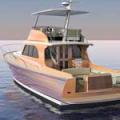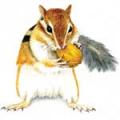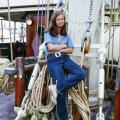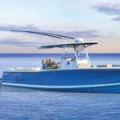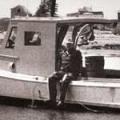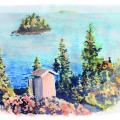There and Back Again
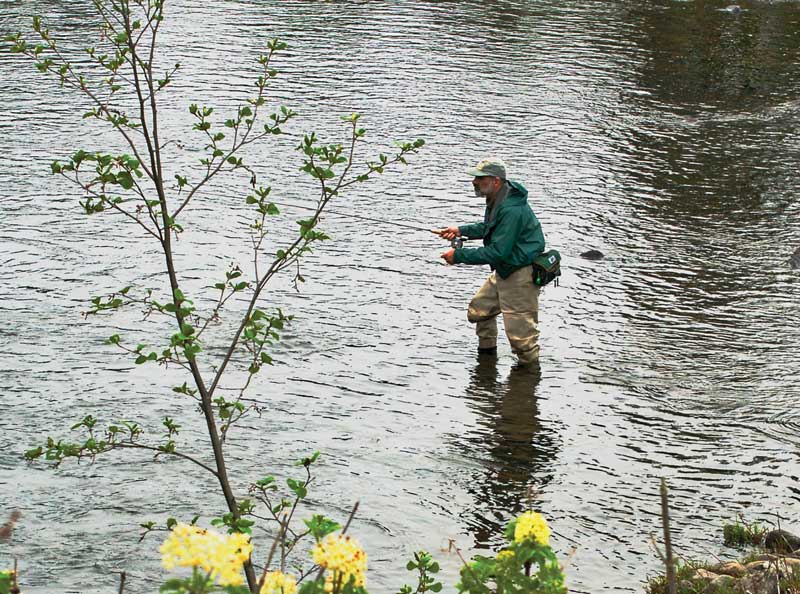 These days, the author takes only what gear he needs as he wades into his favorite stream. Photo by Trish Romano
These days, the author takes only what gear he needs as he wades into his favorite stream. Photo by Trish Romano
As a young man, I read Hemingway and Steinbeck, Harrison, and McGuane. Along the way, the fly-fishing raconteur, Richard Brautigan, brought tears to my eyes while the rabid environmentalist, Edward Abbey, had me raising my fists in outrage. I took to heart the words of Gary Snyder, the acclaimed poet-turned-Buddhist, found in his thought-provoking book, Practice of the Wild: “The wild requires…we learn the terrain, nod to all the plants and animals and birds, ford the streams and cross the ridges, and tell a good story when we get back home.”
Over the years, I’ve tried to follow his advice, attempting, from time to time to tell a good story when returning home from the Rangeley Lakes Region of western Maine where my wife and I have owned a camp for nearly 40 years.
It is a part of the country that has not changed much over time. The rivers, streams, and ponds surrounding our cabin are about the same as Johnny Danforth and Fred Baker found them when they decided to spend the winter of 1876 hunting and trapping the land above Parmachenee Lake. The fish are still here. On average, they are not as large as they once were, but a 16-inch native brook trout is not uncommon and landlocked salmon remain as wild as the moose that sometimes plod down to the river’s shoreline to muse over the mysteries of the forest.
When we first arrived in the region, I’d cast large streamers and weighted nymphs in a manic pursuit for ever-larger fish. I wore a vest with more fly boxes than Samuel Carter had little liver pills, and a pack heavy with reels containing lines that sank at different rates, and clothing for the constantly changing northern New England weather.
Such angling requires time on the water, especially after the spring thaw. This is when smelt, the region’s principal bait fish, leave the lakes to make their spawning run up the larger rivers, with brook trout and landlocked salmon following closely behind. In the latter days of September, the trout and salmon once again swim upriver, this time on their own spawning runs, providing a second opportunity to take fish measured in pounds rather than inches. In rain, and sometimes sleet, and even snow, buffeted by bruising wind and under blistering sunlight, harassed by blackflies, mosquitoes, and no-see-ums, from first light to dark, I’d swing a streamer or drift a nymph, addicted to the tug.
But there is another type of fishing, one that can be employed on the many tannin-stained brooks that slip across the Canadian border—streams that bend and twist through balsam and spruce for mile after mile, some of them headwaters of those larger rivers where the majority of anglers continue their search for trophy fish. Along these secret rills, I can cast to brook trout without coming upon another angler. To be sure, the fish here are diminutive compared to the trout in the big rivers, a few no larger than my pinkie, the largest fitting snugly in the palm of a hand. In these narrow ribbons of water, hidden under shadows cast by a vast conifer forest, I’ve come to appreciate what Thoreau described as “These jewels…these bright fluviatile flowers, made beautiful, the Lord only knows why, to swim there!”
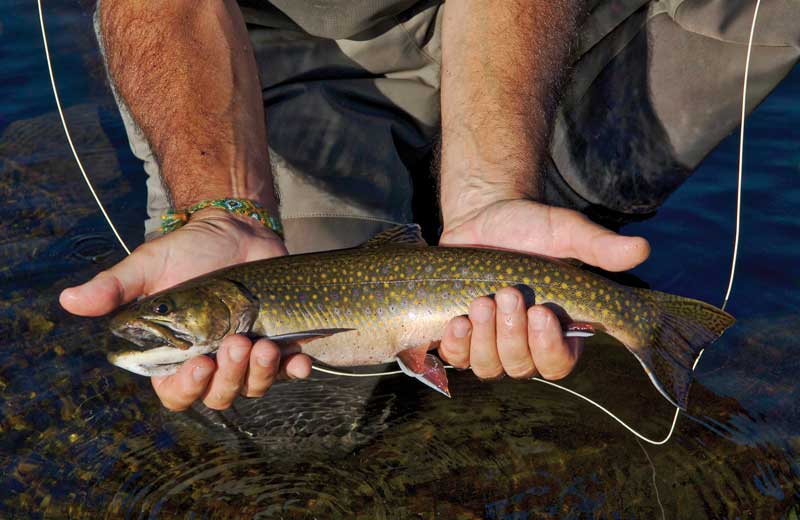 Native to the region, 16-inch brook trout are not uncommon. Photo by Trish Romano
Native to the region, 16-inch brook trout are not uncommon. Photo by Trish Romano
On the losing side of middle age, I now seek out these waters too small to gather serious attention from other anglers; forgotten places, where trout live out their lives in the lee of boulders, under conifer branches or as they sometimes do, in a set of sunlit riffles. These are fish that have rarely heard the splash of an artificial fly.
This type of fishing requires an angler to heed the words of the legendary American naturalist, John Muir, who wrote, “Only by going alone in silence, without baggage, can one truly get into the heart of the wilderness.”
No longer do I feel compelled to wing heavy nymphs past my ear, or make 60-foot casts until my shoulder aches. Instead, I carry a single metal tin that fits nicely in the pocket of my canvas shirt. Once holding cough drops, these days it contains a handful of flies. There are pheasant-tail patterns, ones with parachute wings, maybe a few elk hair caddis or black ants if fishing during the summer months, and fixed-winged and soft-hackled hare’s ear wet flies for when I work my way downstream. While casting a rod constructed by the late George Maurer, my mind is free to be in the moment as a 6-inch brook trout rises through the surface.
With less distraction, this uncomplicated method of fishing allows me to enjoy the creatures found along the edges of running water—the colorful flash of a tiny warbler or the song of the secretive thrush. I’ll catch myself smiling at the splash of a frog or while staring into the eyes of a bashful toad. These moments, like a Basho haiku, remain frozen in time.
Western Maine remains an escape from the madding pace of modern life that has allowed me to trod a trail less traveled—the one alongside a stream where brook trout are willing to play tag with a bit of feather and fur—and return to tell a tale or two.
✮
Robert J. Romano Jr.’s most recent book, River Flowers, is a collection of stories set primarily in western Maine and northern New Hampshire with a few detours along the way. Contact him directly at magalloway@mac.com for an autographed copy.
Related Articles
Share this article:
2023 Maine Boat & Home Show

Join Us for the Maine Boat & Home Show!
Art, Artisans, Food, Fun & Boats, Boats, Boats
August 11 - 13, 2023 | On the waterfront, Rockland, Maine
Click here to pre-order your tickets.
Show is produced by Maine Boats, Homes & Harbors magazine.







